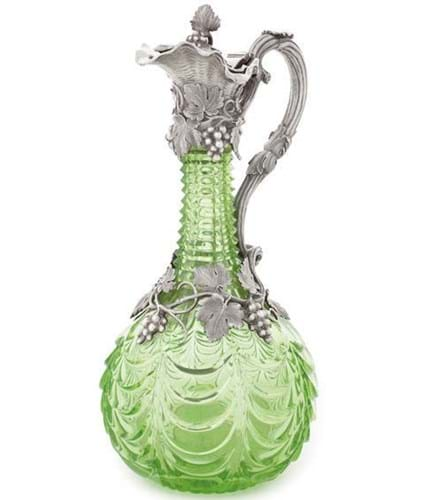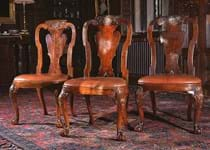
The piece is closely associated with a group of documented tables supplied by the workshop of Thomas Chippendale. A hexagonal top with radiating veneers and the distinctive underscrolled feet were frequent features of Chippendale’s output.
From the Regency era, a rosewood, brass marquetry and ormolu mounted library table attributed to Wilkinson of Ludgate Hill sold for £6000. A relatively large size, the applied guilloche mounts relate to a stamped sofa table illustrated in Christopher Gilbert’s Pictorial Dictionary of Marked London Furniture, 1700-1840.
From the same period was an ebonised and parcel gilt side cabinet incorporating an 18th century Chinese black lacquer panel depicting pavilions, boatmen battling across a lively sea and animals grazing beneath elegant trees. The unusual form, with a grille door to one end, allowed the cabinetmaker to incorporate the panel as a single piece. From a private London collection, it sold at £4200.
Sold at £4000 (estimate £2000-2500) was a Louis XIV brass-bound rosewood and kingwood parquetry medal cabinet. The form is always popular and 18th century examples are unusual: this example with a four-point star inlay to the fall front and 12 narrow fitted lined drawers, generated international interest from a well-informed group of collectors.
It is indicative of current fashion that a good Victorian Chesterfield outsold many other pieces in the sale. This example, in carved rosewood with leather button back upholstery, bears the stamp of Johnstone & Jeanes, the Bond Street firm best known for the finely engineered radially expanding circular dining tables first produced in the 1830s. The business operated until 1880 with this sofa, sold at £3200, among the later productions.
Striking in lime green
Pedestal sales have now broadened beyond furniture to include complementary silver objects. Sold at £2000 was a fine early Victorian silver-mounted glass claret jug by Barnard, London, 1839.
The crisply cast and chased fruiting vine mounts had all the quality one would expect from the maker but its most striking feature was its startling lime green body, something that gave it a head start on similar examples in clear glass.















